Grant Morrison’s long-awaited meta dissection of comics leaves no panel behind, uniquely involving the reader directly in the narrative.
(Warning: review contains plot elements that may be considered spoilers)
In the writing of this review, another layer is added to the multiverse that Grant Morrison has been working on for the better part of the last decade. Like the central character of Nix Uotan, we readers have the ability to traverse worlds and whole universes on a weekly basis, the cover price being our only deterrent from visiting them all. Multiversity opens with a comics critic who begins his review “in the form of a live dissection”. Not content with drawing his character into another layer of fiction, Morrison directly challenges the reader. “Whose voice is speaking in your head anyway? Yours?” The same narration urges us to stop reading. That’s when things get beautifully weird.
As the critic is quickly revealed to be Nix Uotan, a Monitor last seen in Morrison’s much-debated Final Crisis, we learn of a power known as The Gentry that is threatening the multiverse with homogeneity. Sound like any publishers we know? To this end, a group of heroes are drawn from various Earths, some of which mirror DC’s own creations, others being direct analogues of Image and Marvel (or in this case “Major Comics”). Of course, in the time since Final Crisis, DC’s universe shattering Flashpoint/New 52 has buried a number of its characters, although Morrison’s Batman Incorporated stories stubbornly carried on regardless. Yet with DC’s recent attempts at undoing his worlds in Robin Rises and Justice League‘s Doom Patrol, The Multiversity represents a writer grasping onto his own creations, but allowing them to be subverted at the same time.
Every company has dabbled in multiverse destroying entities, not least of which is Marvel’s upcoming Spider-Verse, a tale that has a very similar meta-structure to Morrison’s. Yet with Morrison’s encyclopaedic knowledge of comic book history, he allows himself a cheeky voyage through worlds that either brush against the familiar, or outright parody them. Case in point is the alternate Earth confrontation of Lord Havok and the Retaliators, barely disguised versions of Marvel’s Dr. Doom and the Avengers. There’s an Indigenous Australian Thor analogue called Thunderer, and Final Crisis‘ African-American President Superman as part of the core unit. There’s also Dino-Cop (a version of Image’s Savage Dragon), and one of the greatest returns of them all in Captain Carrot, another character who appeared in Morrison’s Final Crisis.
Which is where The Multiversity #1 may plough off the rails for some readers. Like Alan Moore’s seminal Watchmen, to which inevitable comparisons must be drawn, it is a comic book designed for comic book readers. While it doesn’t necessarily require complex knowledge of DC’s various crises or the inner workings of a brilliantly mad Scotsman, the language and structure is such that it could only be told in a comic book. Stories exist within stories, following Morrison’s long-running notion that every story is someone’s reality. We certainly saw elements of this approach in his Batman run or All-Star Superman, one that attempted to reconcile decades of scattergun storytelling into something whole. Here it is literally the case, with Earth-36’s Red Racer (a kind of Flash) acting as the “resident comic-book nerd”, itself a tip of the hat to the integral role speedsters have played in DC crises.
“People have this idea of canon, but there is no canon,” he recently told Wired. “To me, it’s all real. Every comic you ever read is real.” We saw elements of this in Morrison’s Final Crisis, and has been an element of DC’s stable of various Crisis stories. Never one to waste a whole universe on a throwaway hero or villain, no minor character has escaped Morrison’s eye, with weird and evil versions of characters existing as refugees from mirror universes. Yet it is also a product of stories that emerged from a different time and place, specifically the post-Final Crisis/pre-Flashpoint reality of 2009. However, like the best DC stories, eschewing continuity results in an imagination without boundaries.
Ivan Reis, who has worked with Morrison before on an issue of The Invisibles, is a perfect choice to kick off the art duties on this behemoth. A frequent collaborator with Geoff Johns, his Green Lantern took place during the the same era as Morrison’s last prolific tenure at DC, and the artist has worked across the board at Marvel and later on New 52’s Aquaman and Justice League with Johns as well. Compared with Neal Adams and Alan Davis, the neo-classic style gives the more ‘out there’ elements a grounded look, not least of which is the completely badass designs for Captain Carrot and President Superman. When he is allowed to cut loose on the many-layered images from across the Multiverse, such as the first meeting of the refugees (pictured above), it is a textbook example of controlled chaos.
What will follow this issue is a series of one-shots, each of them #1 issues that will serve as bibles for characters found within the forthcoming meta-story, bookended by this main Multiversity title (much as Morrison did with Seven Soldiers). It all points to DC doing something rather large with its reality by early next year, especially with Futures’ End marking some major changes on the way. What Morrison has presented here is the culmination of years of work, and is either pure genius or unhinged madness. Perhaps it is a little of both, but it is undeniably enveloping. Just as the story began, Morrison leaves the reader with the responsibility of how comics unfold, which is perhaps his most pointed bit of industry commentary yet.
Agree or disagree? Got a comment? Start a conversation below, or take it with you on Behind the Panel’s Facebook and Twitter!
If you are an iTunes user, subscribe to our weekly podcast free here and please leave us feedback. That’s how we get more attention on the Interwebs!

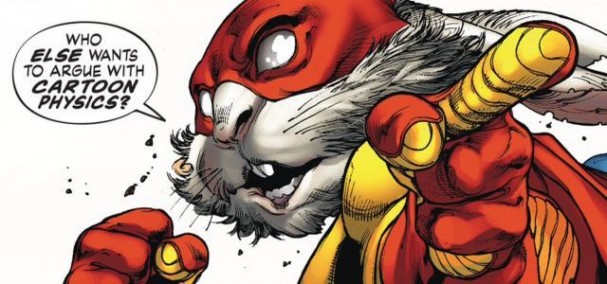

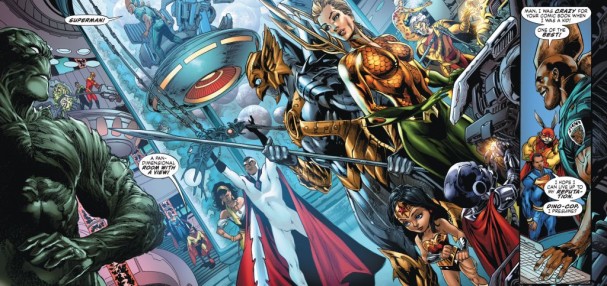

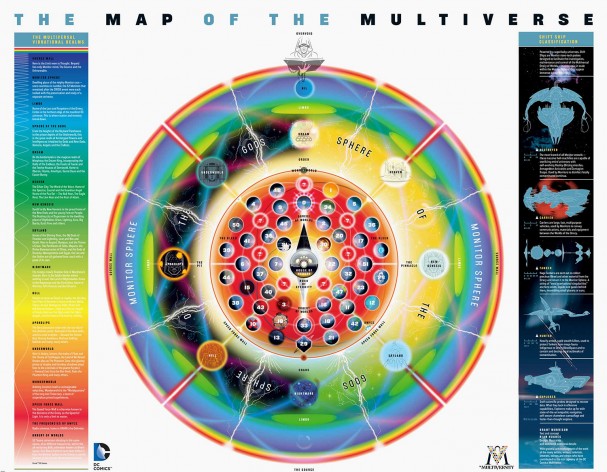

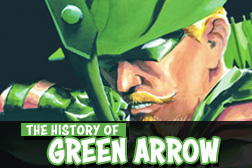

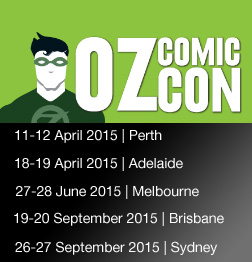





4 pings
[…] this issue, Grant Morrison’s Multiversity finally spills out into our reality. We’ll understand it all once we’ve finished […]
[…] this issue, Grant Morrison’s Multiversity finally spills out into our reality. We’ll understand it all once we’ve finished […]
[…] development of the story, and writers of our multiple destinies. To that end, the final page of the The Multiversity #1 left readers with the ultimate responsibility of how their comics unfold, which may just as easily […]
[…] the vibrational chain from the New 52’s Earth 2. There might still be 52 worlds as set out in The Multiversity map (with the addition of New Earth 2 filling in the “?”), but there are an infinite […]